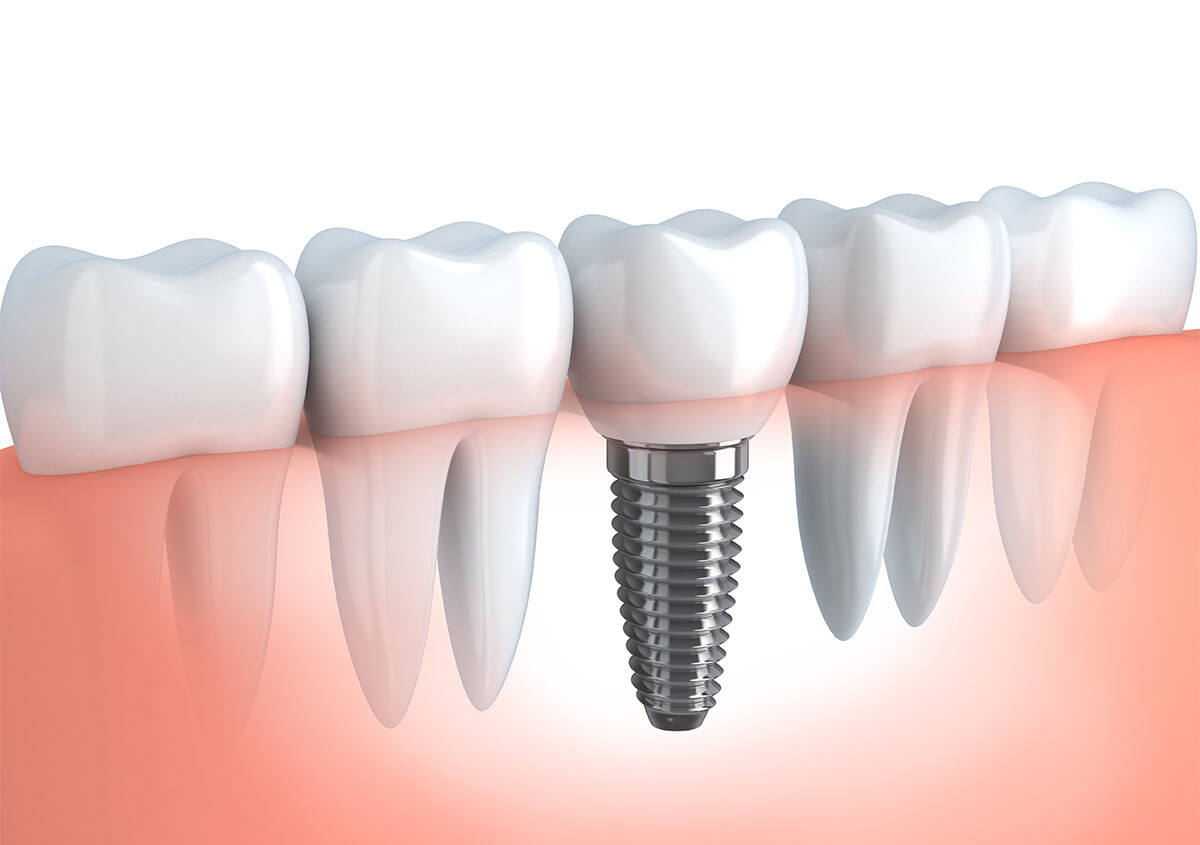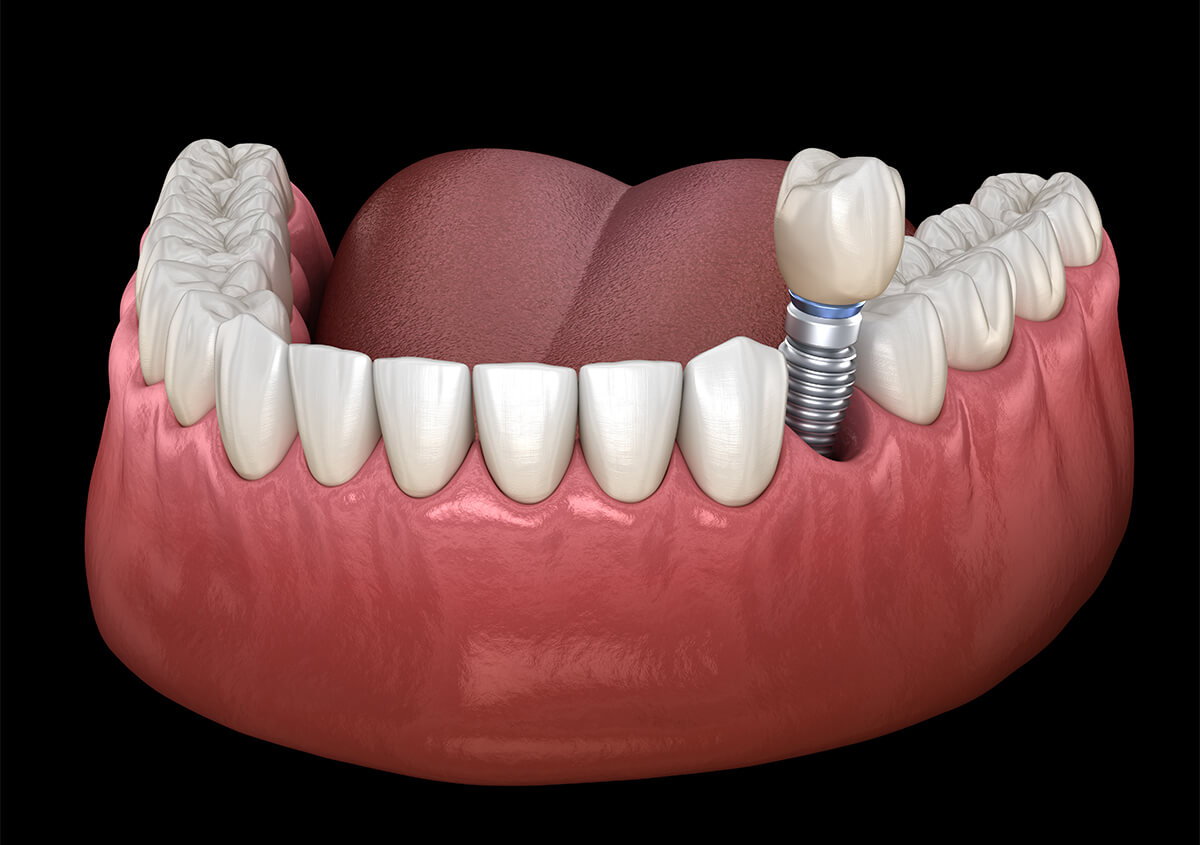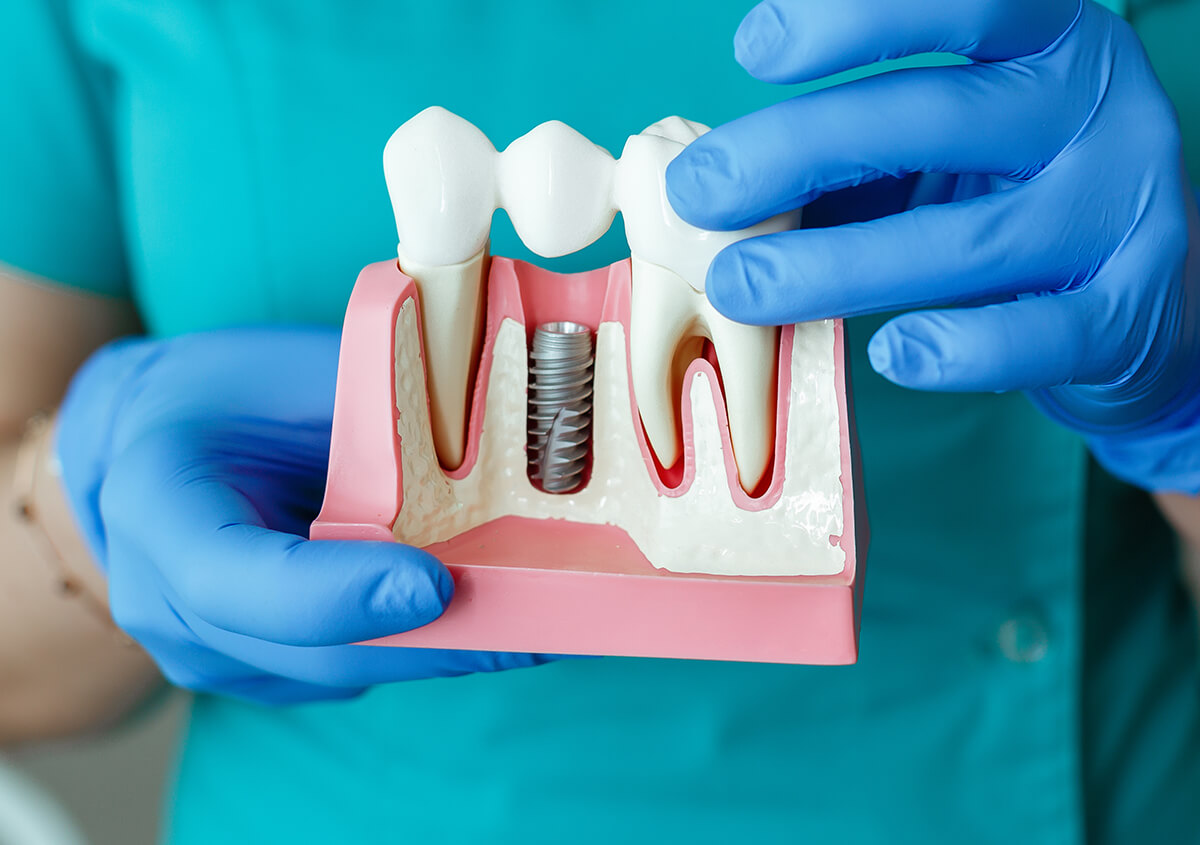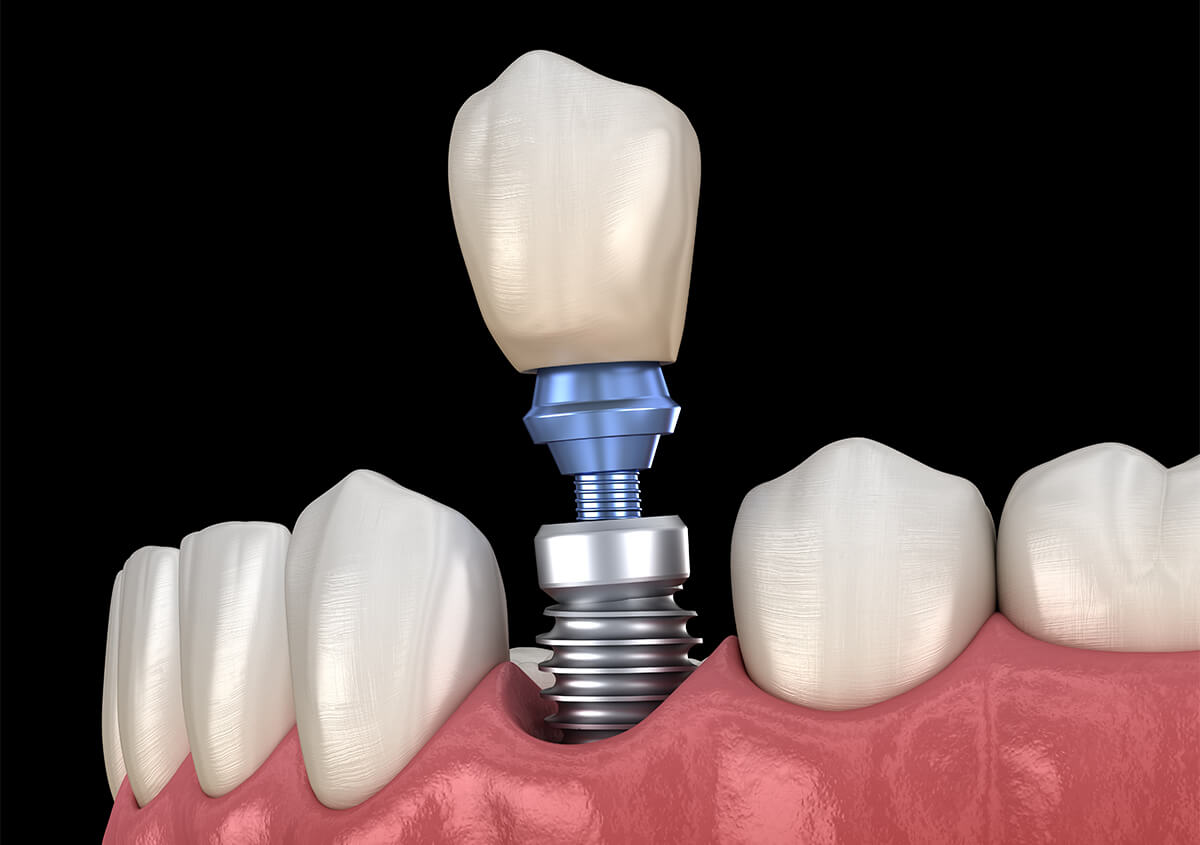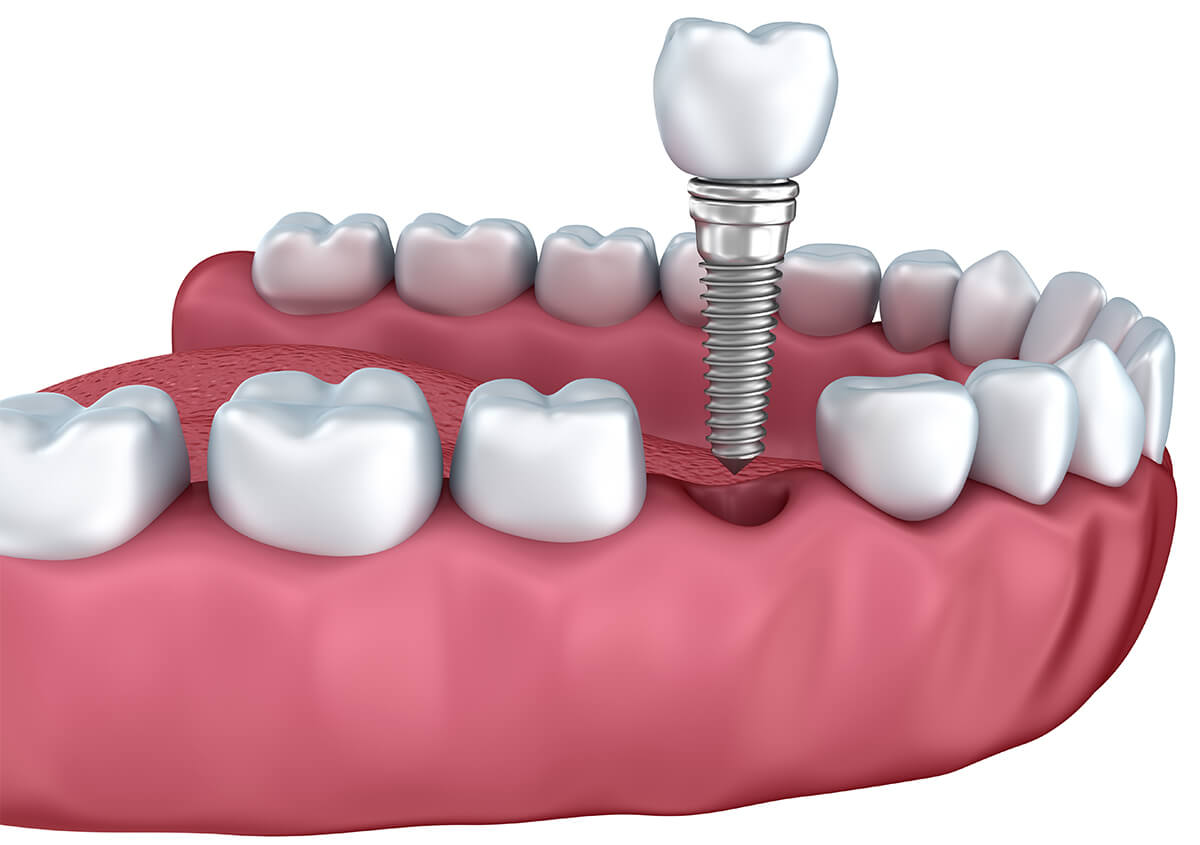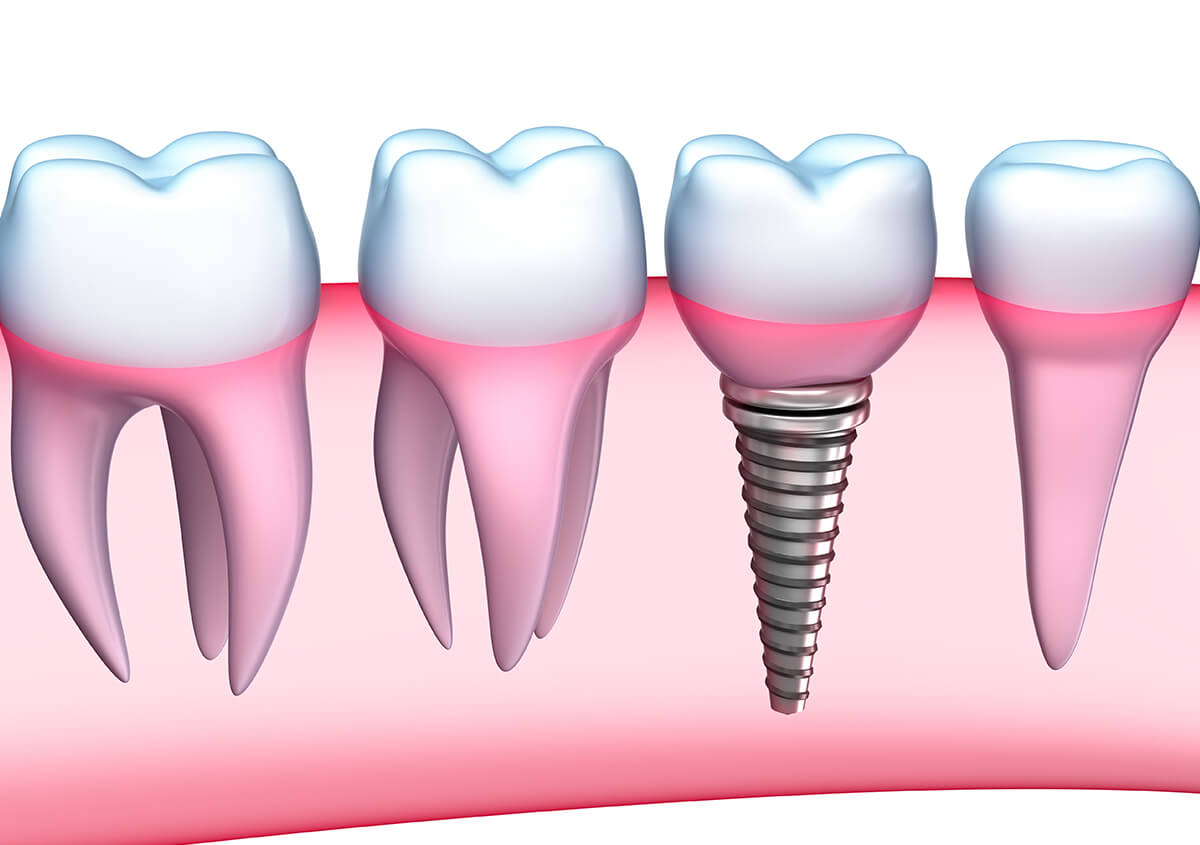Why Dental Implants are the “gold standard” to replace teeth
Nearly half of middle-aged Californians have experienced losing at least one tooth due to decay or periodontal (gum) disease. The California Department of Public Health further reports that almost 70% of our fellow residents aged 65 and older have undergone a dental extraction due to advanced decay or gum disease (not wisdom teeth extractions). Fortunately, you can keep your teeth for life by partnering with an experienced and skilled dentist like Dr. Kenneth Childers. And, if you do require tooth replacement at some point, Montclair Dental Care in Oakland, California, offers the “next best thing” to natural teeth: implants!
Getting to the “root” of dental implants
Dental implants present a way to replace a single tooth, several teeth, or a mouthful of teeth in the upper or lower arch (upper and lower jaws). The dental implant itself is designed to function as a tooth root. The implant is placed in the jawbone during a straightforward, in-office procedure. While the process itself is standard and nothing to worry about, it requires considerable planning and skill. It is important for dentists like Dr. Childers to place the implant in the jaw precisely. So, it can best support the teeth that will be connected to it. Due to the strategic placement of these artificial tooth roots, Dr. Childers may place as few as four implants to support all teeth in either the upper or lower jaw or arch. With detailed planning and positioning, a maximum number of teeth can be held in place by a minimum number of implants.
Since the implant is the most expensive part of the treatment process, such strategic placement prevents this “gold standard” form of tooth replacement from becoming cost-prohibitive to many patients. Additionally, this technique further minimizes the incisions made to place the implant, supporting the most comfortable, efficient, and pleasant experience possible at our practice.

Fact or myth? If you have a cavity, you will know it. Myth, Mild tooth decay has no symptoms. Sensitivity begins to occur when the tooth decay is already causing damage to the nerve. Today’s dentistry prevents tooth decay with sealants and other conservative methods. Fact or myth? Sugar is the prime cause of cavities. A fact and also a myth. Acid is the main trigger in producing the bacteria that causes cavities. The bacteria is then fueled by the consumption of carbohydrates. Sugar is a trigger in cavities, but carbs as a whole are the main cause. Fact or myth? Cavities are the prime reason for root canals. Myth. Root canals are a result of nerve damage. And untreated cavity could lead to nerve damage, but root canals are on set by number of different factors. Facts on myth? Brushing and flossing are the best way to prevent cavities. Fact. Fact or myth? Expensive toothpastes are always better than cheaper ones. Myth. Different toothpastes are better for different teeth in situations. Sometimes moderately priced toothpaste can be more effective. Ask the dentist about what might be best for your teeth. And always look for the ADA seal of approval. Fact or myth? If a tooth is white, it must be healthy. Myth. Under the surface there may be cavities, problems with the root or other abnormalities. Fact or Myth? Teeth whitening is harmful because it damages enamel. Myth. There are many modern teeth whitening processes that have minimal harmful effects. Teeth whitening isn’t for every mouth or person though. Consult the dentist before you proceed with whitening treatments. Fact or myth? Dentists should be feared. Myth. With today’s advancements in technology and safety practices there is nothing to worry about. Procedures are as quick and painless as ever. Fact or myth? You should visit your dentists at least twice a year. FACT.
The process, in a nutshell
If Dr. Childers determines that you are a good candidate for implant-supported crowns, bridges, or dentures, the procedure itself generally involves accessing the underlying bone on numbed teeth. So, you won’t feel anything. We are happy to discuss options to maintain the utmost comfort and relaxation throughout treatment during your consultation. After the implant has been perfectly placed in the bone, it naturally joins the rest of the jaw. Once this process is complete, the prosthetic tooth is connected to the implant, usually with an attachment called an “abutment.” There are many different designs for implant-retained systems, which we can introduce to you during your visit.
Since these systems are designed like natural teeth, our patients appreciate that they feel like the “real thing.” They also look natural and are made to last (some patients in our area have implants that are still going strong 40 years on!). Now, it is vital that we discuss tooth replacement options promptly following extraction or tooth loss. Prompt tooth replacement avoids a devastating process known as resorption (the loss of supporting bone in the jaw). Call us today to schedule your appointment with Dr. Childers at (510) 328-7792.


